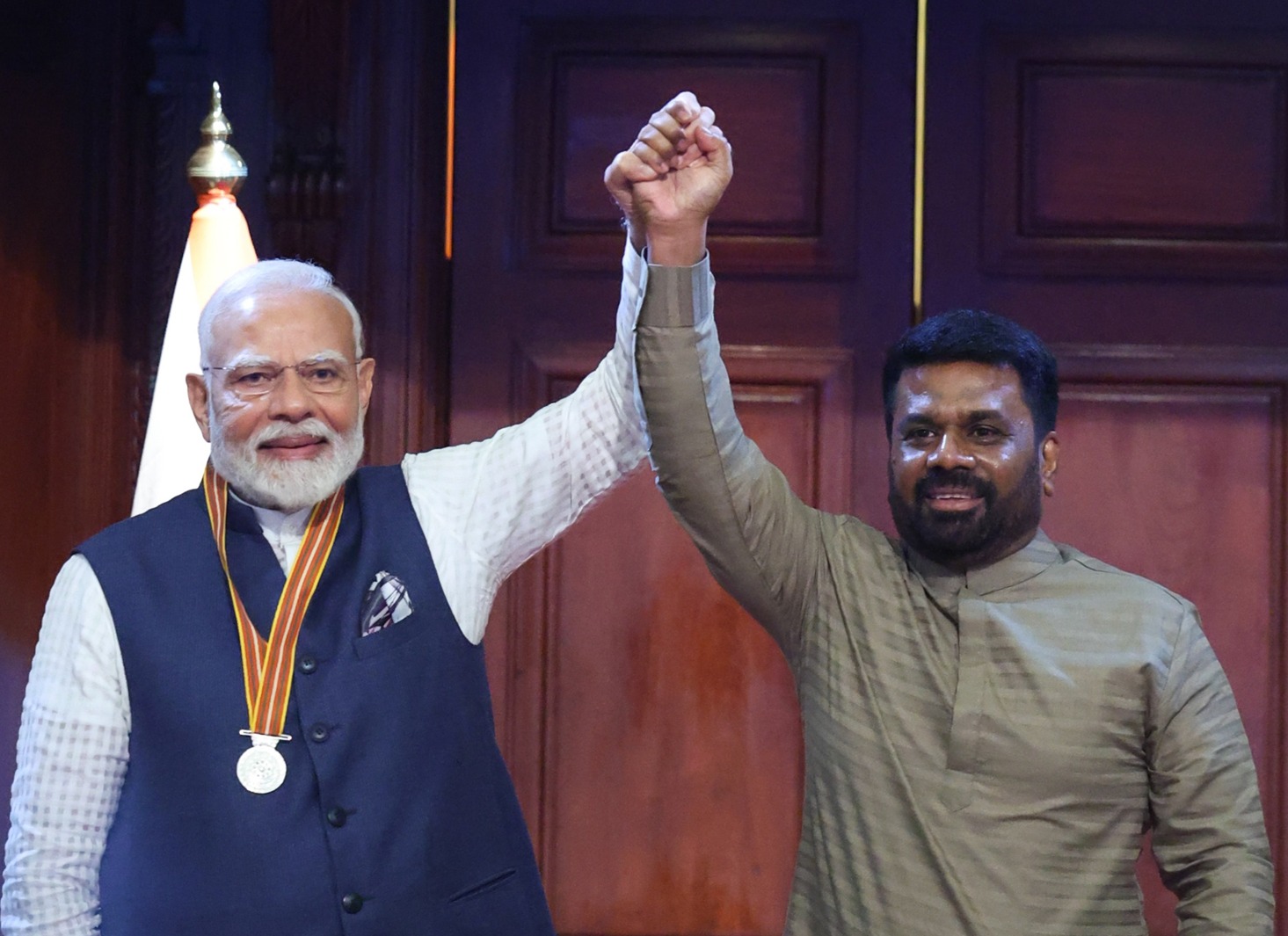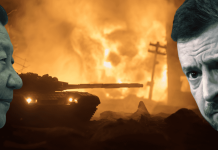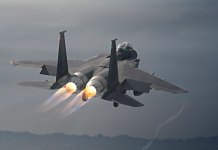If anything, building a political career in a political party that was viscerally anti-India, yet now, as the President of the country, signing a Memorandum of Understanding (MoU) on Defense with India, which was hitherto considered unthinkable by even the so-called pro-India predecessors, proves the importance of political realism in international relations.
Here, the country concerned is Sri Lanka, and the leader happens to be its relatively new President Anura Kumara Dissanayake.
In fact, the significance of the MoU on Defense that India and Sri Lanka concluded early this month (April 6), during Prime Minister Narendra Modi’s three-day visit to Sri Lanka, has been under-reported, even though Disanayaka’s domestic critics have been trying to make the conclusion a live political issue.
Perhaps it was not coincidental that on April 5, 1971, exactly 54 years and one day before the MoU was signed, Dissanayake’s political party, Janatha Vimukthi Peramuna (JVP), had launched Sri Lanka’s first armed insurrection against “Indian expansion”, with the cry, ‘motherland or death’.
JVP, it may be noted, is based on Marxist–Leninist political philosophy. It was involved in another armed uprising against the then-government in Colombo during 1987-89.
JVP has been committed to establishing a Socialist State, although in recent years it has compromised on many of its principles by entering mainstream democratic politics and abandoning its resolve to abolish private property.
As a representative of the JVP, Dissanayake entered the Sri Lankan Parliament for the first time in 2000. He has been the party’s main voice in the parliament over the last 20 years. In 2019, he formed an alliance called the National People’s Power (NPP), consisting of the JVP as its principal component and twenty other political parties, trade unions, and social groups.
Last year, as the NPP leader, Dissanayake was elected as President of Sri Lanka, becoming the first to win election as the leader of a third party, after the SLFP and UNP.
However, it was not without significance that, when the MoU on defence was being signed on April 6 within the Secretariat in Colombo, outside the nearby Fort Railway Station, a JVP breakaway faction called the Peratugami Front was staging a protest against “Indian expansion”.

Additionally, many other dissenting voices resorted to social media to ask why the details of the MoU were not made public for debate and discussion among the people of Sri Lanka. Questions raised included whether “Sri Lanka has become India’s 28th state with Disanayaka as its Chief Minister” and “why does the Defense Treaty remain wrapped in utmost secrecy?” In fact, critics asked what had happened to the JVP, which, in the past, took the anti-Indian expansion protest to the streets.
Surprisingly, the exact wording of the MoU is not yet available. However, during subsequent press conferences, Indian Foreign Secretary Vikram Misri and Sri Lankan officials have described it as “an umbrella framework aimed at enhancing and institutionalizing bilateral defense cooperation in a structured manner, lasting five years.”
This includes:
• High-level military exchanges
• Joint exercises
• Capacity building
• Humanitarian Assistance and Disaster Relief (HADR) operations
• Naval port calls
• Exploratory discussions on defence industry cooperation
According to Misri, the MoU “signifies their shared commitment to regional security and stability”, which, in turn, “ proceeds from the fact that we have had very good conversations between the two leaders (Modi and Disanayaka).
They started in December last year when President Disanayaka visited Delhi, and it continued during this visit, and one of the recurring themes in the discussions and in fact, I would say a point of really close convergence in the narratives from both sides has been a recognition of the completely interlinked nature of the national security of Sri Lanka and India.
“And the President of Sri Lanka has both during his visit to Delhi and on this occasion and on several other occasions mentioned and stated very, very clearly that Sri Lankan territory will not be used or be allowed to be used in any manner that is inimical or detrimental to India’s interests. In fact, if I recall correctly, during discussions today, he said that neither Sri Lanka’s land nor the oceans around it will be allowed to be used in any manner inimical to India’s security.
“So, this is the background of the signature of the defense MoU between the two countries for the first time, and the MoU is in itself an umbrella framework document that will make existing defense cooperation initiatives more structured.”
From Colombo’s side, Sri Lankan Defence Secretary Sampath Thuyacontha has said that the MoU was initially built on the Defence Dialogue held in 2023, that the approval of Sri Lanka’s cabinet was given prior to signing, that both parties will be “respecting each other’s military and national laws, as well as the principles and purposes of the UN Charter—including sovereign equality and non-intervention in internal affairs”, and that though the agreement would be in force for five years, either party can terminate it with three months’ notice.
Of course, it would be wrong to say that India and Sri Lanka did not have any defense relationship prior to this MoU. Although not structured, defense cooperation between the two encompassed training, joint exercises, the supply of military equipment, high-level bilateral visits, and goodwill visits by Navy and Coast Guard ships. The Annual Defence Dialogue was held between the Defense Secretaries every year to review and add momentum to bilateral defense cooperation. India remained the largest provider of foreign training assistance to the Sri Lankan Armed Forces.

Besides the bilateral SLINEX (Naval Exercise) and MITRA SHAKTI (Army Exercise), which are held alternately in India and Sri Lanka, Sri Lanka also participated in MILAN, a multilateral naval exercise hosted by the Indian Navy.
In terms of capacity building, India installed the Maritime Rescue Coordination Centre (MRCC) for the Sri Lanka Navy in 2024.
India has provided two Dornier Aircraft to the Sri Lanka Air Force for maritime surveillance. In addition, India has been the ‘first responder’ for Sri Lanka, with the Indian Navy and Indian Coast Guard intervening in Sri Lankan waters to avert large-scale environmental damage, such as the MV XPress Pearl in May 2021 and the MT New Diamond in September 2020.
Security cooperation on counter-terrorism and other related areas has also been an important aspect of the bilateral relationship, with the Colombo Security Conclave emerging as a key platform in recent times to address such issues at a regional level.
However, the importance of the latest MoU lies in the fact that, as Misri said, it was the first defense MoU between the two countries. And more importantly, it came nearly four decades after the 1987 Indo–Sri Lanka Accord, which had led to the deployment of the Indian Peace Keeping Force (IPKF) in Sri Lanka’s North-East, resulting in a bloody and controversial intervention.
The IPKF was deployed in the island nation between July 1987 and March 1990, and as many as 1,155 Indian soldiers were killed fighting the Tamil secessionists in what Modi said, while laying wreath at the IPKF Memorial in Colombo on April 5, “in service of peace, unity and the territorial integrity of Sri Lanka”.
As noted above, it is Disanayaka’s party, the JVP, which had staged a bloody insurrection in 1987 against the presence of Indian troops on the island. In that sense, times have indeed changed. Now, there appears to be a point of close convergence in the narratives from both sides, indicating that the national security of Sri Lanka and India is closely interlinked.
This strategic convergence was also reflected in a series of other agreements signed during Modi’s visit, covering energy, digital infrastructure, and development projects, many of which are centered in the Tamil-majority North-East.
All this has happened at a time when China is also systematically trying to expand its influence in Sri Lanka, both economically and militarily.
All told, Sri Lanka is extremely crucial for China to pursue what is called its “String of Pearls” strategy of dominating the Indian Ocean Region (IOR), to India’s serious discomfort. The lease of strategic Hambantota Port by Sri Lanka to China for 99 years has been a key feature of this strategy.
Against this background, the Modi government appears to have done well in convincing the ruling establishment in Colombo why India should matter, given that the India-Sri Lanka relationship is rooted in deep civilizational links based on shared historical, religious, cultural, and strong people-to-people ties.
Sri Lanka is an integral part of India’s “Neighborhood First Policy,” based on mutual trust and goodwill. India’s assistance to Sri Lanka at critical moments, most recently during the unprecedented economic crisis, has been unparalleled.
New Delhi’s strategy towards Colombo is also said to reflect Modi’s vision, MAHASAGAR – “Mutual and Holistic Advancement for Security and Growth Across Regions” for the Global South, which he announced in Mauritius on March 12.
The Mahasagar vision builds on the SAGAR (Security and Growth for All in the Region) policy, which Modi first announced during his visit to Mauritius in 2015.
SAGAR has guided India’s engagement with the Indian Ocean Region for the past decade. “We have taken the SAGAR vision forward for the stability and prosperity of this entire region. Today, taking it forward, I would like to say that our vision for the Global South will be, beyond SAGAR — (it will be) Mahasagar that is ‘Mutual and Holistic Advancement for Security and Growth Across Regions’,” Modi has said in his media statement. He has explained that the new approach would emphasize trade for development, capacity building for sustainable growth, and mutual security for a shared future.
Modi, it seems, has been particularly focused on pursuing his MAHASAGAR strategy towards Sri Lanka. It is not without significance that his visit to the island nation early this month was his fourth as the Prime Minister.
And this time, he spent as many as three days in Sri Lanka, a rarity for an Indian Prime Minister on a visit to a neighbouring country, which is something that no strategic analyst could ignore.
- Author and veteran journalist Prakash Nanda is Chairman of the Editorial Board of the EurAsian Times and has been commenting on politics, foreign policy, and strategic affairs for nearly three decades. He is a former National Fellow of the Indian Council for Historical Research and a recipient of the Seoul Peace Prize Scholarship.
- CONTACT: prakash.nanda (at) hotmail.com




